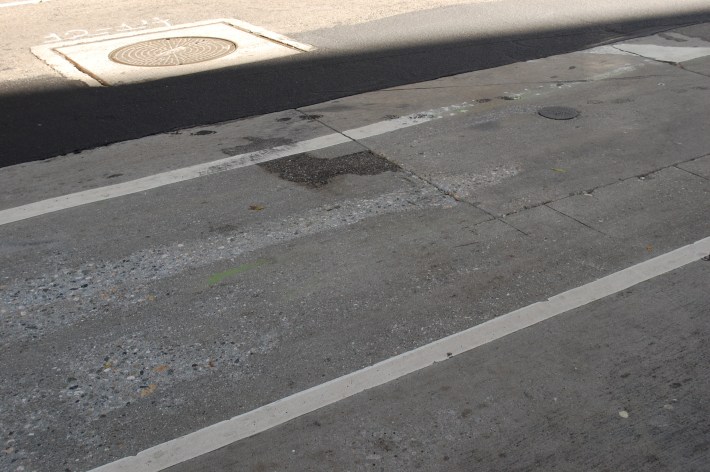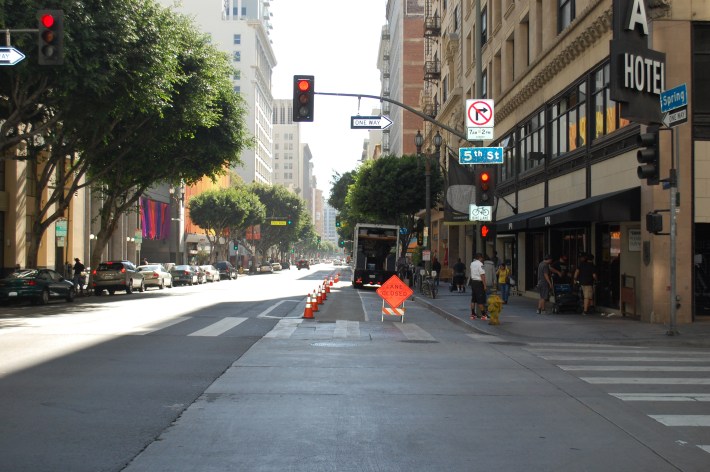
By the time I hit Spring Street, I was in a bad mood.
My plan for the afternoon was to ride Metro and my bike up to Colorado Blvd. to take pictures of the new buffered bike lanes before heading downtown to ride the repainted Spring Street Green Buffered Bike Lane and then visit the heroes of L.A. Walks at Fountain and 7th.
But the day had gone awry. An hour fixing a Santa Monica Next story which contained some misinformation about Sunday's plane crash and a broken down Expo train had stolen the time needed to get up to Northeast Los Angeles. So I rolled my bicycle out of the Civic Center Subway Station and was ready to pedal down Spring Street to 7th in a bad mood. City officials had told me the lane would be repainted over the weekend "before CicLAvia" so I was looking forward to the new lane.
But the lane isn't painted. In fact, the water blasting that took place on the night of September 15th and a year and a half of routine wear and tear have left it a shambles of a bike lane, and we're not just talking about green paint anymore. The buffer is obliterated in areas. The bicycle markings were blasted away with the green paint. Even the left line is missing for large stretches of the lane.
As you would expect, riding down it isn't a great experience anymore. Just before the Parklet at L.A. Cafe, a driver swerved in front of me. When I yelled, "Hey, I'm in a bike lane!" he looked confused. He apologized at the next light. "I didn't see it. I didn't know."
It was the opposite experience of riding on the Expo Line the day the Culver City Station opened. On that day, the people I talked to and overheard seemed out of casting for a Metro commercial, talking in awe about the great project and about how L.A. is catching up to New York on transit access. Yesterday was confused drivers and angry cyclists.
When I snapped the above picture just South of 4th Street, another cyclists stopped and asked if I was with "one of the bike groups who is mad about this." Not wanting to get into too long a conversation on the street, I just said that I was.
"It never would have taken this long to fix this lane if Villariagosa were still in charge," he muttered and pedaled off.

I'm not sure that's true. After all, Villaraigosa was in charge when the deal was struck that led to the lanes current predicament, it does raise a central issue.
It's been over two weeks since city work crews water blasted away the green paint, huge portions of the bike lane, and the city's credibility as a rising city for bicycle friendliness. Two weeks of unsafe bicycle conditions where the city once had the crown jewel of its urban bicycle network. While there is certainly great news out of Eagle Rock concerning the new buffered bike lanes on Colorado Boulevard, Spring Street held and holds a symbolic importance beyond just physical infrastructure and paint.
How much longer are we going to wait to see the new design in action? Why did the city blast before it was ready to paint? While the process that led to the de-greening of Spring is frustrating enough, that's an old story. The new one is wondering what is taking the city so long to fix the bike lane they destroyed a couple of weeks ago.






